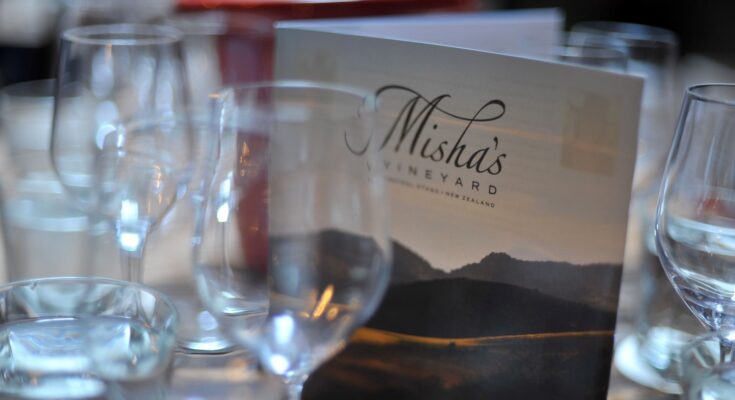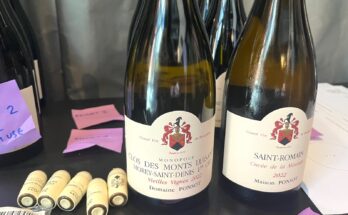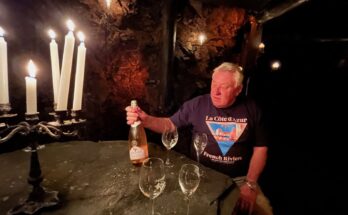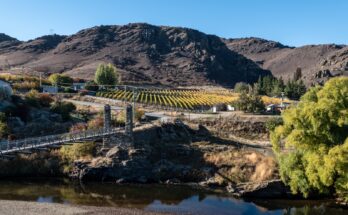On my latest trip to Central, I finally found time to drop into the Tasting Room, in Cromwell, of Misha’s Vineyard. I’d been up in Bendigo that morning with my Pinot advisor Curt Thomas in tow, and driven past the vineyard. First thing I do is apologise to the owner – Misha Wilkinson (after whom the vineyard is named) for not having enough time to actually get up to the site.
Misha is happy to see us, but does advise “Next time you come down here, make the time to go and see the vineyard. It is the one site and it is the hero of what we do. It’s distinctly different from other vineyards and it is dramatically steep. It’s got the real wow factor. It really is worth seeing – quite breathtaking”.
Curt – as a first time visitor to Bendigo – was amazed by Prophet’s Rock. It’s just such a dramatic landscape. The fortitude and imagination, if you like, of someone to develop a vineyard in a place like that is just mind-boggling. At Misha’s Vineyard they have a 3.5 km driveway, with a sheer drop off the side, where you drive up through a moonscape, up to 350 metres high, facing the lake. Andy and Misha Wilkinson were the first to be on the lake-facing terraces of Bendigo. And at first they had no water. The first thing to be done was to install an irrigation scheme. A huge pump on the floor of Lake Dunstan, and then horizontal drilled under State Highway 8. Then a 200m lift of the water, and five 30,000 litre tanks. The neighbouring vineyards also draw water from the scheme.
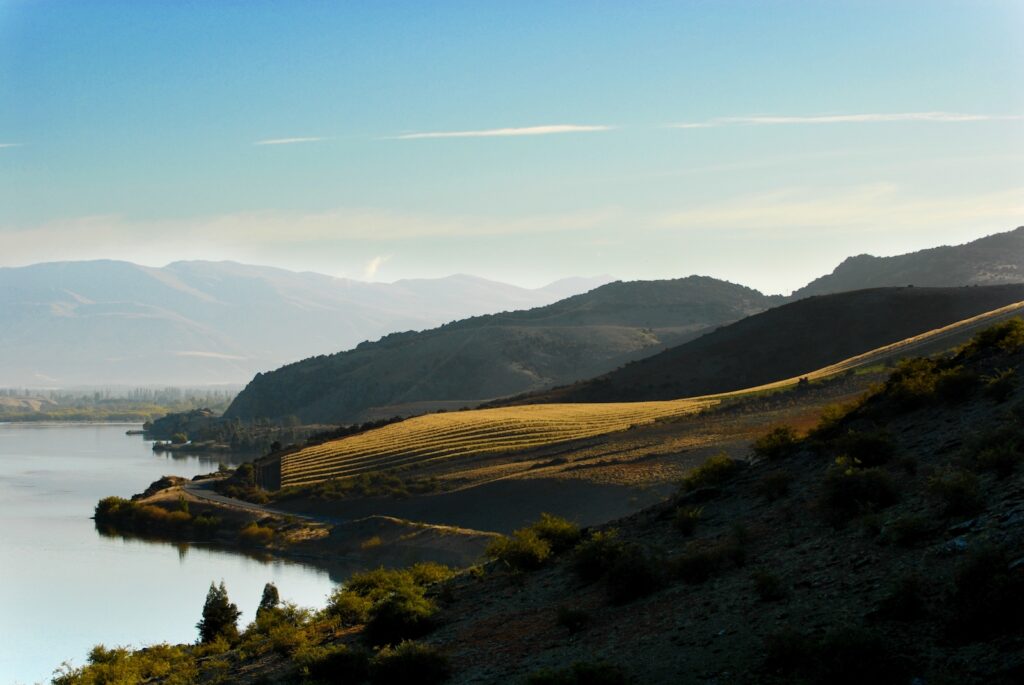
The pair had Robin Dicey as a Viticultural Advisor and got the land verified by Dr Richard Smart, a leading global consultant on viticulture who came and looked at 32 soil pits on the vineyard. Along the Bendigo slopes, there’s been a lot of changes in ownership over the years, with the land next to them being sold a couple of times. Now, to the south of the vineyard is the big Scapegrace distillery development, whilst to the north of are lots of lifestyle blocks, but with some people putting in the likes of small vineyards, and cherry orchards.
Misha gets us started while we wait for winemaker Olly Masters to arrive. “We do three Pinots and I’m feeling flippant I tell people they’re for ‘Lunch, Dinner, and Special Occasions’. Apart from the Verismo block, we’re managing the vineyard so that all the fruit is on its way to create The High Note Pinot. Just in terms of cropping level and leaf plucking. Everything is done by hand, and hand harvested, which takes a month to harvest.
When Olly tastes through all the barrels, every barrel is different, and he basically puts together a blend of all the barrels that have just got a bit more fruit forward and plushness – that’s for Cantata. And this barrel selection is mainly for on-premise, as a premium-by-the-glass. It helps to make ‘The High Note’ even better because we’re taking out just the juicier barrels, but it works really well”.
The market for Misha’s Vineyard is predominantly on-premise and they talked to many restauranteurs, who said ‘We need an affordable, good quality Pinot, but we don’t want to have something that is a second label that’s in all the supermarkets and retail’. In reality, it isn’t farmed and produced as a lower-grade Pinot. Negociants, who distribute the wines in New Zealand, have found this really hits the mark in terms of price and quality.
I ask Misha if those early years starting out in Central were hard?
Misha explains those early years and gives us a short run through of their history: “It’s never easy when you’re starting out. We approached Olly and he initially didn’t want to move from Ata Rangi, but we persuaded him to come down here. It was Steve Smith who suggested we get Olly. And I think it was just at that stage when people were starting to notice Central. It had been Martinborough that had been the place for Pinot – and it still makes amazing Pinots, but in terms of that tipping point of where the Pinots were coming from…
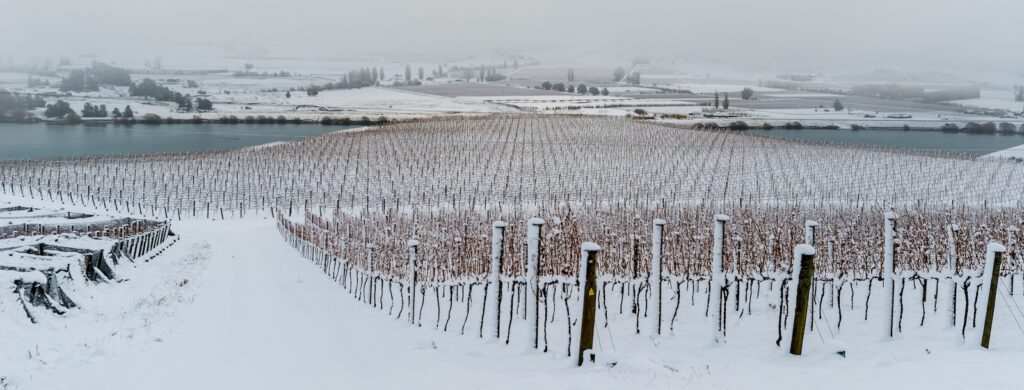
He joined in 2006. We did a trial vintage in 2007, and our first commercial vintage in 2008. The trial vintage we called The Audition. The vines were three years old. We always say we were auditioning the winemaker – Olly – to see if he knew anything about making Pinot! We just did a tonne and a half – a hundred cases. I still have ‘The Audition’ which is interesting to taste. Just made from one clone at the top of the vineyard – we wanted to go through the process and let Olly get his hands on the fruit a little bit before we started in 2008.
2008 was quite a big vintage in Central Otago. An abundant year. Our vines were four years old and we cut more than 60% of the fruit off pre-veraison. And that’s the hardest thing. You’ve waited four years to take your first crop and “Really – we’re cutting that much fruit off?!” But I’m really happy with the ’08. Central had had small crops in ’06 and ’07, and some people kept the bigger crops on for ’08 but then found it was a little bit diluted. A couple then didn’t do their top brand.
‘The Audition’ from 2007 became ‘The High Note’ and that is our main Estate Pinot. Those early vintages do really well – in fact we’ve been supplying Cassia Restaurant with all of our library vintages that we were happy to part with. We’ve done sixteen vintages now, and in the first ten vintages all the Pinots needed time. It took a while for the vineyard to achieve its potential. Some of our earliest Pinots – ’08, ’09 and ’10 – they are drinking beautifully now, but they were very tight and unforgiving early on.
We held a showcase events in Wellington and Auckland to show the ageability of our Pinot Noirs. We showed ‘even vintages’ – ’10, ’12, ’14 and ’16, but I gave all the attendees a little book which had the reviews of all the vintages. I thought people are going to say “Oh you’ve only showed us the even vintages, not the odd vintages so are they not as good?”. Before we did those showcase events, we had Cameron Douglas MS and Olly sit in the back room and we opened everything. I said to Olly “you’re sitting here now as a judge and you’ve got to taste, review and score”. We were looking for lots of things – like should they still be in the cellar, or past their drinking window”. We were all excited about the Pinot Noirs during that tasting exercise so it was great to be able to demonstrate the ageability of our wines to media and trade at the showcase events”.
Olly arrives from the winery, with samples of the components of ‘Verismo’ and we settle into tasting the various wines and having a round-table discussion.
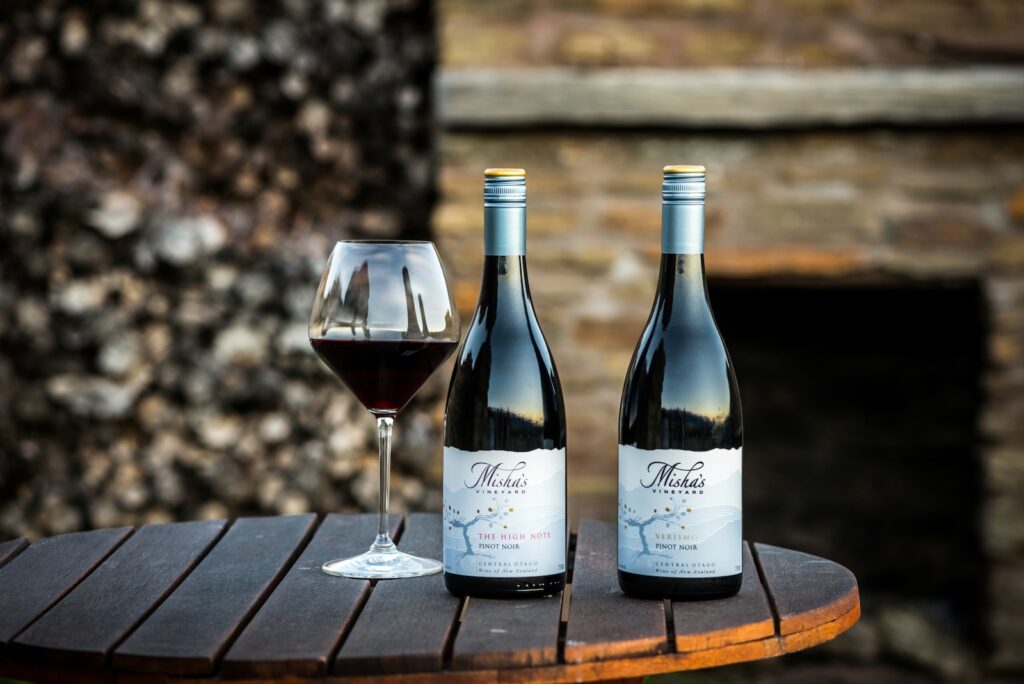
David WB: Is it a challenge to have to section things up, for different parts of what is being produced – the different markets you’re going for with the wines?
Olly Masters: The thing is, with our site, you’ve got a reasonable variation in terms of vigour and aspect and there’s a lot to play with even though it is one block. We start picking down at the lakefront and we’re still picking a month later, at the top. Then there are clonal differences and that makes a huge difference. The Abel is right down at the bottom, for example, but that’s a late clone. And there’s two sections, even within the row down the bottom – the bottom half is quite vigorous and gives us quite a high crop as Abel will carry a lot of crop.
But the top half of those rows is much lower vigour and we get to pick the low-cropping part of that parcel early. The bottom half can carry twice as much fruit.
DWB: Do you keep things separated as they come in? How many various ferments would you have going on?
OM: Where there’s an obvious difference like that, where we pick half of the row – we keep that separately and we’ll go back when the rest is ready. This season we had about 15 ferments. A lot of larger four-tonne lots, but then those ‘Verismo’ picks are more like 1.5 tonnes.
DWB: What was the deciding factor is coming down here to make wine?
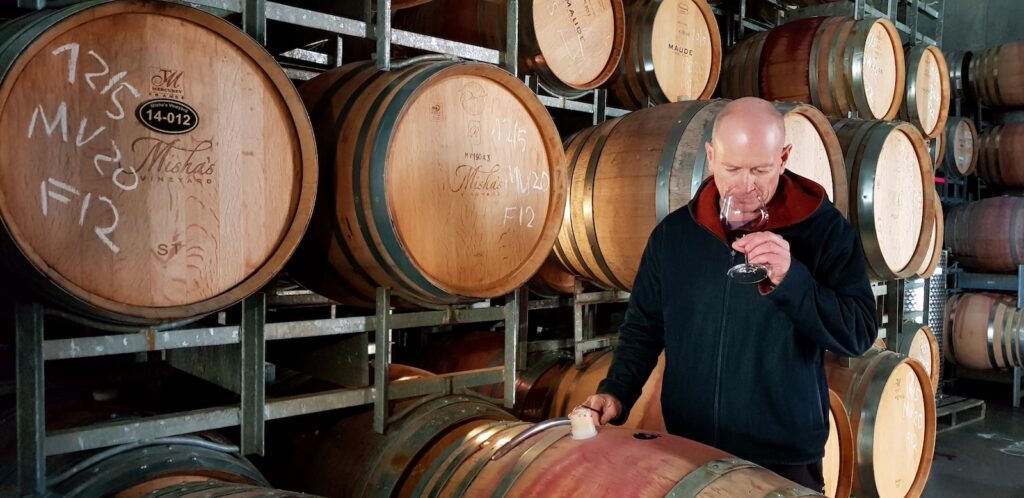
OM: Well, initially I said no. I was still consulting to Ata Rangi, and I got a phone call one day from Misha whilst I was driving around Martinborough. She wanted to know if I was interested in coming down and seeing what they were going to do. Back then it wasn’t so busy and now the flights have got a lot easier! So it is more achievable logistically to come down here than it used to be.
DWB: I spoke to Larry McKenna just before he retired from Escarpment, and he did say that he kind of wished he’d found a way to take up some of the opportunities he’d seen in Central.
MW: The block right next to us, we call the McKenna block, because Larry had been down and said “That’s what I want”. He had come down and picked it out.
DWB: Right – well, I hadn’t heard that before? And Curt has a connection with Martinborough – he’s known Clive for a long time.
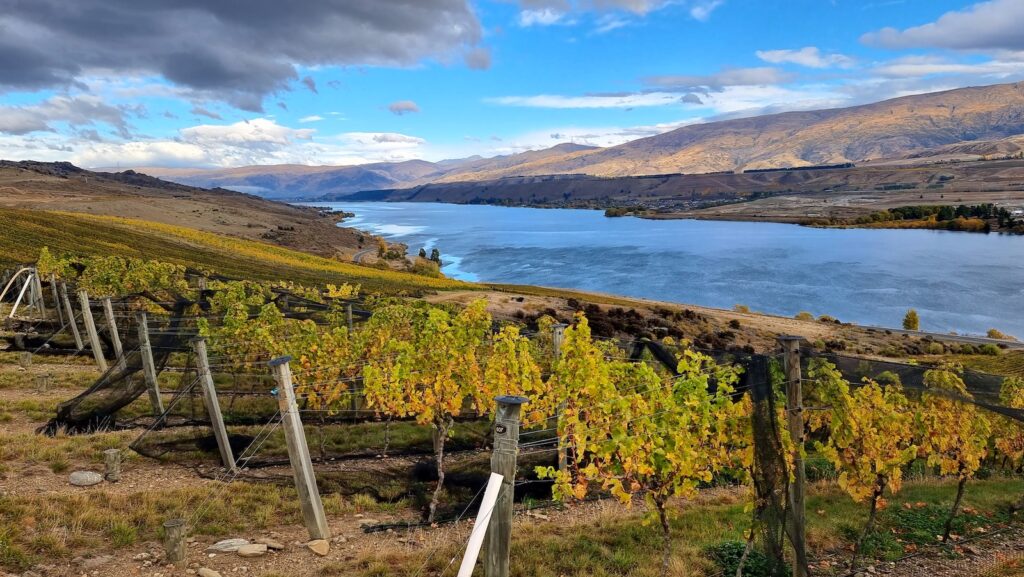
OM: I was down there at the end of ’89, and when I worked there my first vintage was ’90. Worked for Ata Rangi for ten years after that. Martinborough was a vastly different town back then. Martinborough has always been a little bit on the edge cropping-wise. A bit like Waipara and Canterbury. One of the advantages that Central has – whilst the weather can be challenging, it is a lot more reliable. I still commute. I’ve got one hectare of fruit that I generally sell to Ata Rangi, and consult to a few people around town. And down here about half the time.
MW: This is the ‘Verismo’ 2016.
DWB: That’s pretty seductive isn’t it? Very generous through the middle, and a bite of acidity at the finish.
OM: That freshness and the fruit is the key – it is Central’s point of difference. Martinborough has a warmer, broader slightly more mature fruit character. That bright, pure cherry, plum… is Central.
MW: Olly used to say when he was asked what is the difference between Wairarapa and Central – that in Martinborough it has structure but you’re looking for the fruit; and down here you have to be a fruit tamer. It’s a cool climate wine so the fruit should be fresh.
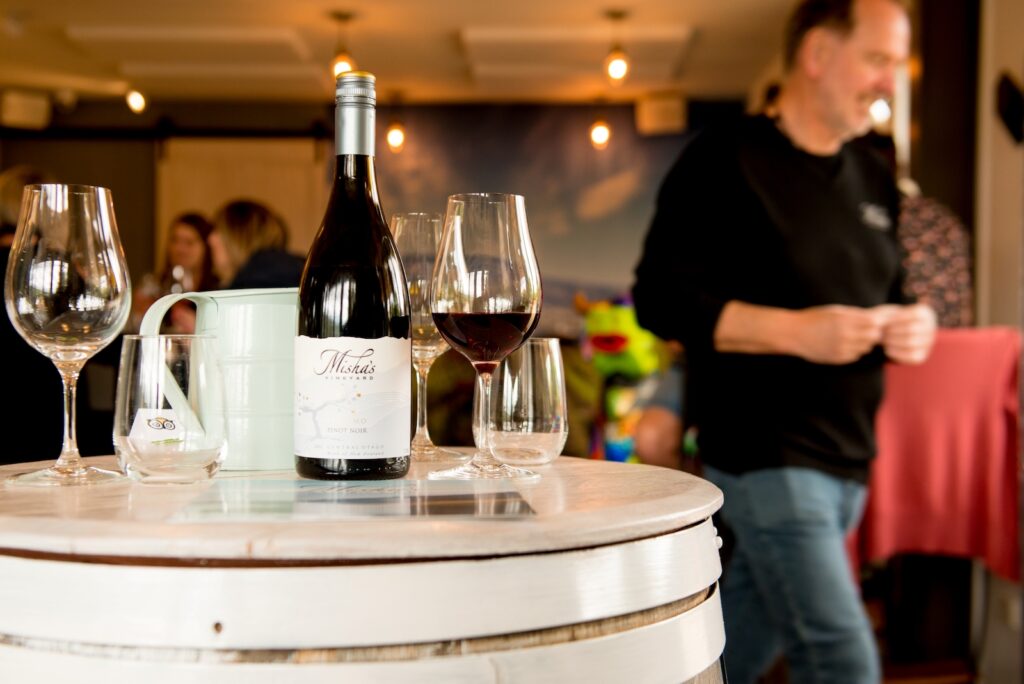
DWB: So was it the opportunity to do something different that appealed?
OM: They took me around the site and you feel that history. You come here and drive down the gorge and you see those huts, thinking how the gold miners struggled over winter in a stone hut in the middle of that gorge. The challenge that it would have been to earn a living off that dirt.
I think that vine age, which everyone talks about, is real. I got to see that in Martinborough. Central has always got fruit, but in terms of palate – length, line, and not having to throw a lot of oak at it, or other ways. It takes a while where you can rely just on that piece of ground. This vintage the vines will be twenty years old. We always said that ten years was a good start. It feels like the last five years, the wines have just got easier to make – and better and better.
I was going through samples today. The whole vineyard could deliver $55 Pinot wines. But in terms of finding a place in the market, and selling that – where there is a million and one labels. In reality that’s not easy. You have to have an entry-level, approachable wine.
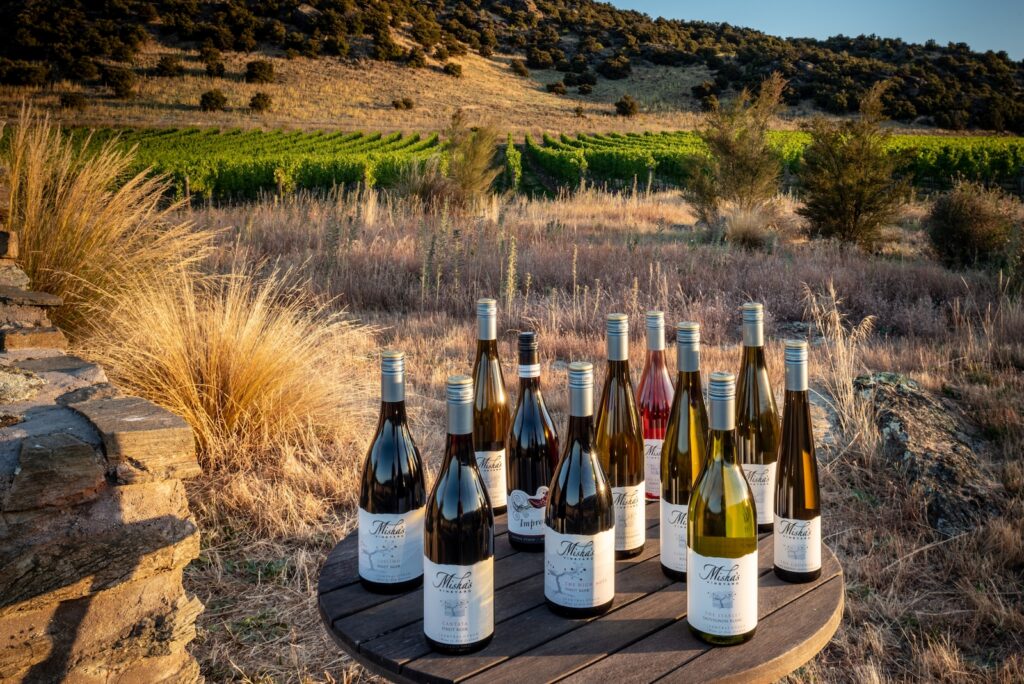
MW: I’m almost a bit scared pouring this, as it was your number one rosé last year. That one was about four and a bit grams, and this is three grams – but you’ve got a bit more barrel portion in this.
OM: Yes, one more barrel. Which, on a small volume, makes a big difference percentage-wise.
Two clones – 114, which is one that we don’t necessarily like for the main Pinots. And six. We’re looking for something that ripens earlier. It’s ready two weeks earlier than everything else, so it actually works well to be able to pick it and turn it into rosé. We always want to pick fruit early, but that’s easier said than done. Keeping that purity of fruit, but it still has texture and weight in it.
David and I just judged rosé together at a show, and it was the most consistent colour of rosé I’ve ever seen.
DWB: Yes, there was hardly any that stood out were there? There were maybe two that were the old school, darker rosé colour. This one has lots of fruit to it – almost full flavoured in terms of a rosé. The acidity gives you that lovely snap to the finish, clean and fresh. And a distinctive flavour I’d call ‘Christmas nougat’ – with cranberry, macadamia and a nip of honey.
MW: And we just tweaked our label for the ’22 vintage. We’ve always had our vine with the eight bunches of gold. What we’ve added now is schist down at the bottom. Everything is single vineyard and so influenced by the schist – so we added that. We’re trying to show the site as much as we can.

I’ll get the Sauvignon, and we’ll change glasses. This is planted on the ski slope block, and if I’m looking across the vineyard from the lake – that’s it, and it’s a little bit steep! (laughs) The left hand portion is the Pinot that goes into the rosé and the rest is the Sauvignon. You can only pick walking down the hill, and when the pickers get to the bottom of the hill, they get in a minibus and we drive them back up to the top of the hill. The fruit gets quite a lot of colour, because we’re not quite at the optimal angle, and one side of the canopy gets more sunshine than the other. Olly has had us pick one side of the canopy and go back and pick the other side. But normally now we pick it together. The sunny side goes gold and the other side is still green Sauvignon, but it can also happen on the bunch – you get a tropical side and a lemon-lime side. In Sauvignon that works really well. On the sunny side we don’t do any leaf plucking and leave all the canopy there, and on the more shaded side we take all the leaves off.
DWB: It has that white Bordeaux style to it.
OM: Yes, that liquorice and jellybean. Sometimes it has a bit more passionfruit to it. Typically there will be about 30-40% old wood, wild ferment. It adds more texture, but you don’t see it on the nose. It softens and broadens the back of the palate.
MW: It is interesting from a Tasting Room perspective. When people come in here, we give them this list and say “Pick any five on there” and they don’t do the Sauvignon. And you say “Please try the Sauvignon – it’s a different expression”. And what we’ll tend to get is a positive reaction.
We export to fifteen countries, including Asia; and although we only have two hectares, when going into some of their markets – they ask if we have Sauvignon. And we can say “Yes – and can we talk about the other wines..” And what was nice is we had a couple of listings like the Paddock Bar at the Singapore Grand Prix which is a $10,000 three-day pass to the Paddock Club right behind the pits. What they liked about the Sauvignon is that it is from New Zealand so will satisfy the people who like that fruit-forward style, but it still has enough of that minerality that will keep the old world happy.
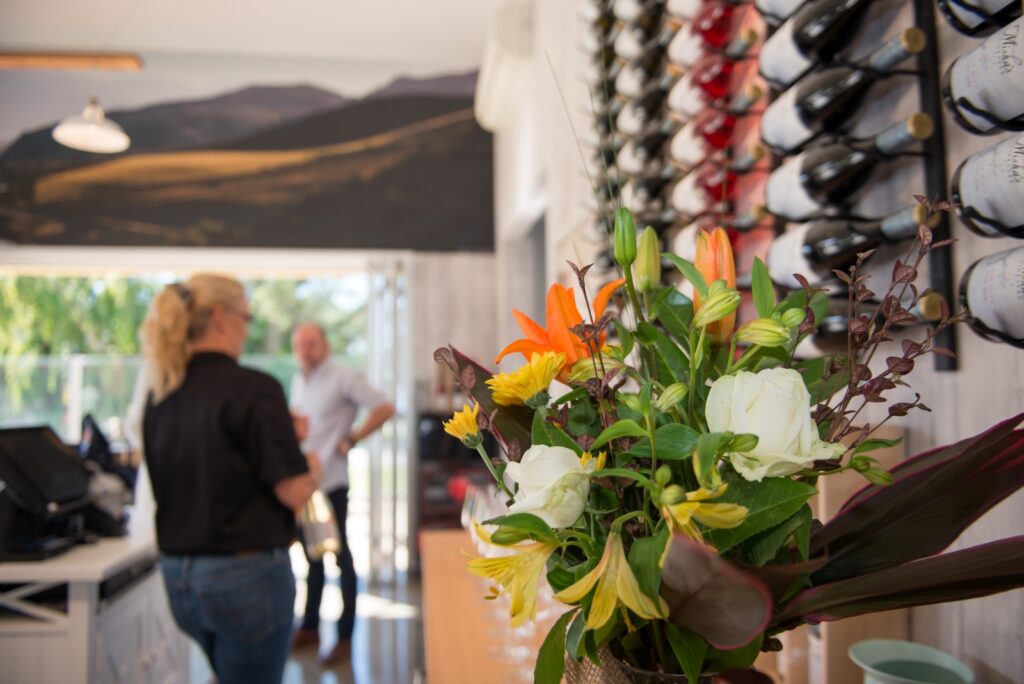
DWB: How are you finding your time on the New Zealand Winegrowers board? Last time I saw you, you’d just been elected onto it.
MW: I’m two years into that. It’s interesting and challenging. Maybe ten to twelve hours a week, so it’s very time-consuming. You have to think about the industry from so many different perspectives and you’re really aware that it’s a two-speed industry. 90% of the wine is produced by half a dozen people, and the other 680 players are small. The reality is it’s a Marlborough Sauvignon Blanc story. You look at our exports – 96.5% of what we export to the US is Sauvignon.
And this is the Lyric Riesling…We’re a reasonable size producer of Riesling for down here. In a good vintage we’ll do 7-800 cases of ‘Limelight’ and 2-300 of ‘Lyric’. In the Tasting Room we pour the two Rieslings, and this one is the number one wine we sell. Overall we sell more Pinot, but there are three different versions of that.
We also have a wine – thank you Air New Zealand – that is served on Business Premier – our 2021 Dress Circle Pinot Gris. They knew about us because the Limelight Riesling was a Fine Wine of New Zealand and was in Business Premier a couple of times. The 2021 is drinking beautifully right now.
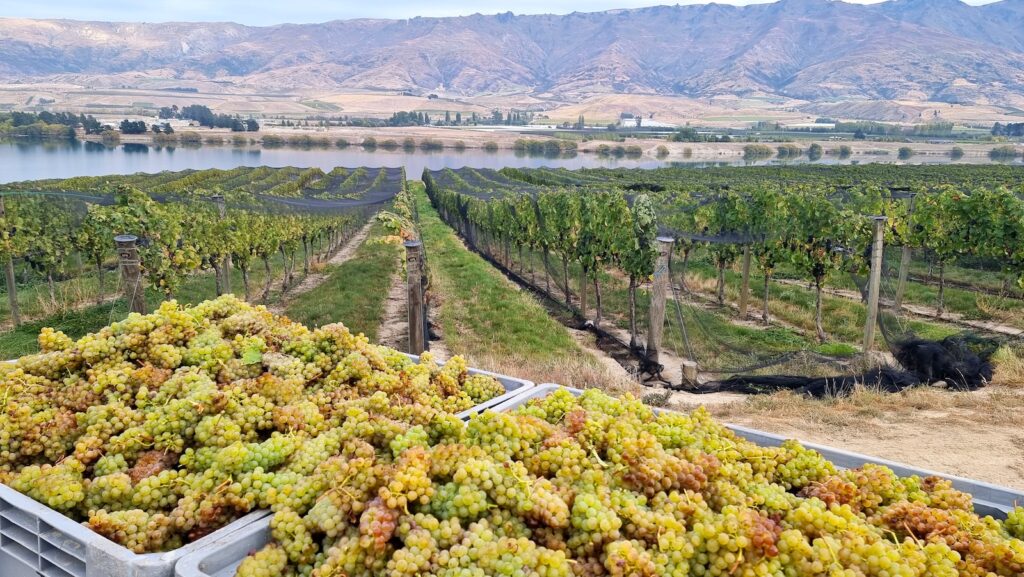
We had a discussion recently about the ageability of Pinot Gris. A critic, Ian D’Agata of Terroirsense, said of our ‘2015 Dress Circle’ – “If this isn’t the best New World Pinot Gris wine I have ever had, it comes real close to being numero uno”
We also have a Gewurztraminer – quite often the residual sugar is about ten, but this is about six. It’s always in that 6-10 range. This is very drinkable, that you can put with anything. It is your dry white wine match.
CT: One thing I don’t like in Gewurz is when it gets soapy, or especially that pot pourri vibe to it – it makes my skin crawl! Someone described that perfectly as ‘the smell of your grandma’s lingerie drawer’
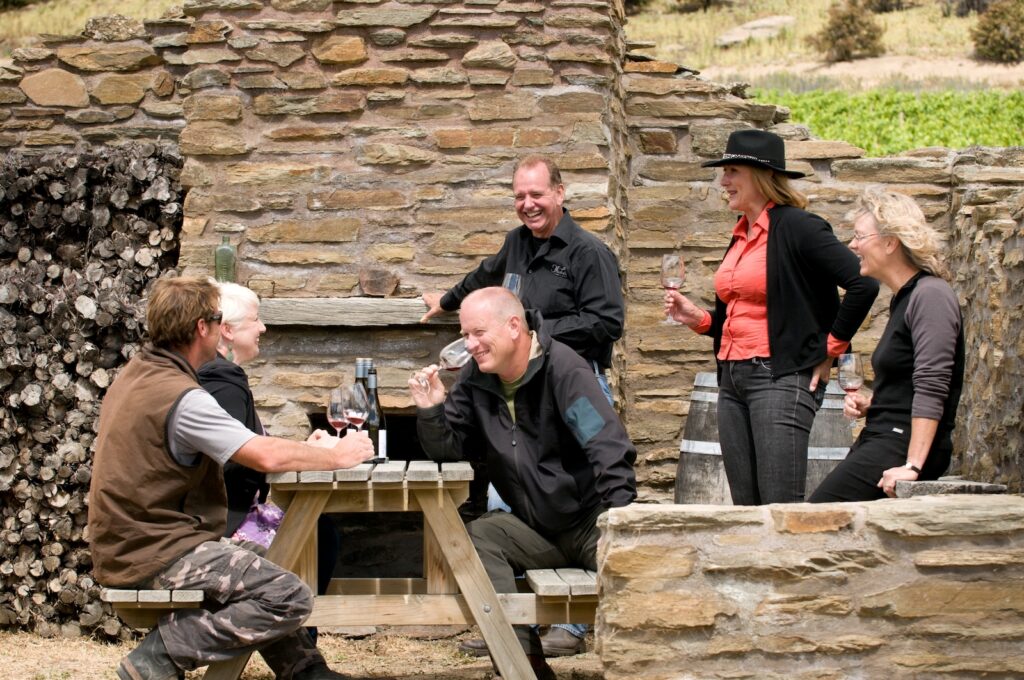
OM: We try to keep that brightness and freshness. Gewurz has such a low acid, potentially.
MW: And The Cadenza – this is our foray into a refreshing dessert wine, and not too many people can say that. I think you would serve it with anything fruit-based, but as an aperitif as well, with chicken or paté. This was picked on the 8th of June! We finish harvest at the end of April.
CT: You get that cinnamon spice, but it doesn’t seem like straight Gewurz. It’s got a different flavour spectrum than what I’m used to. I’m loving that.

